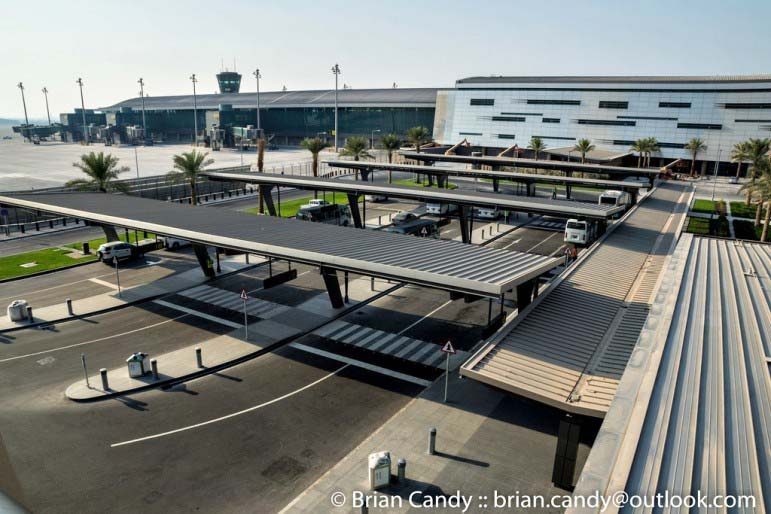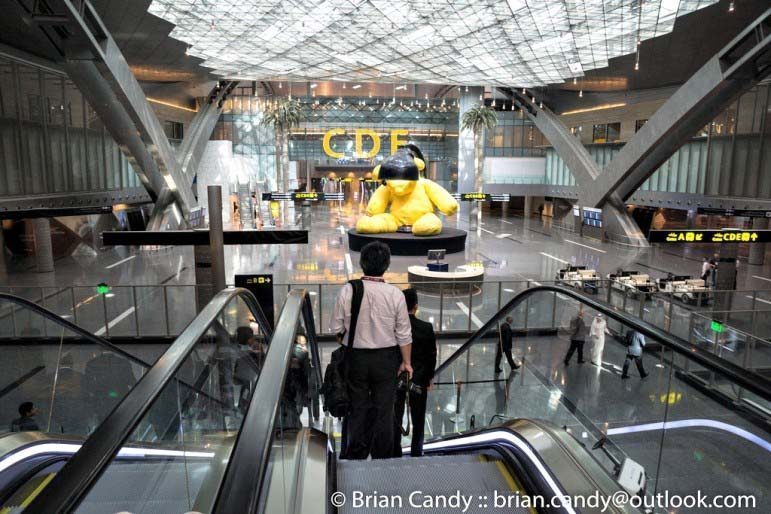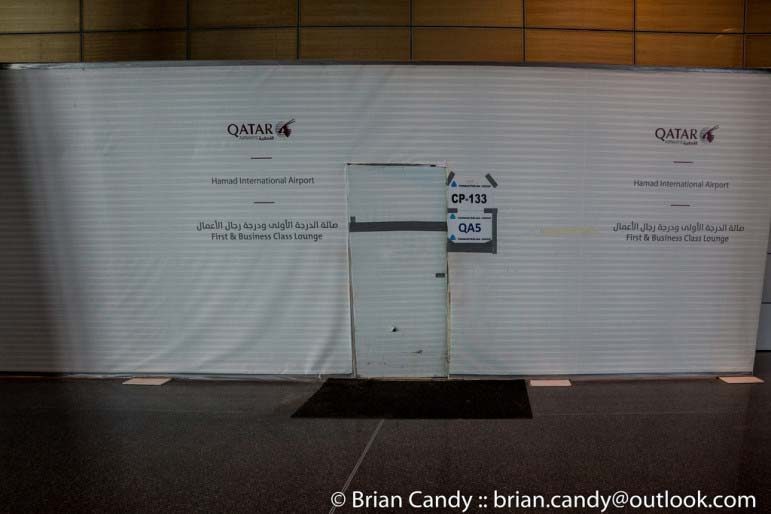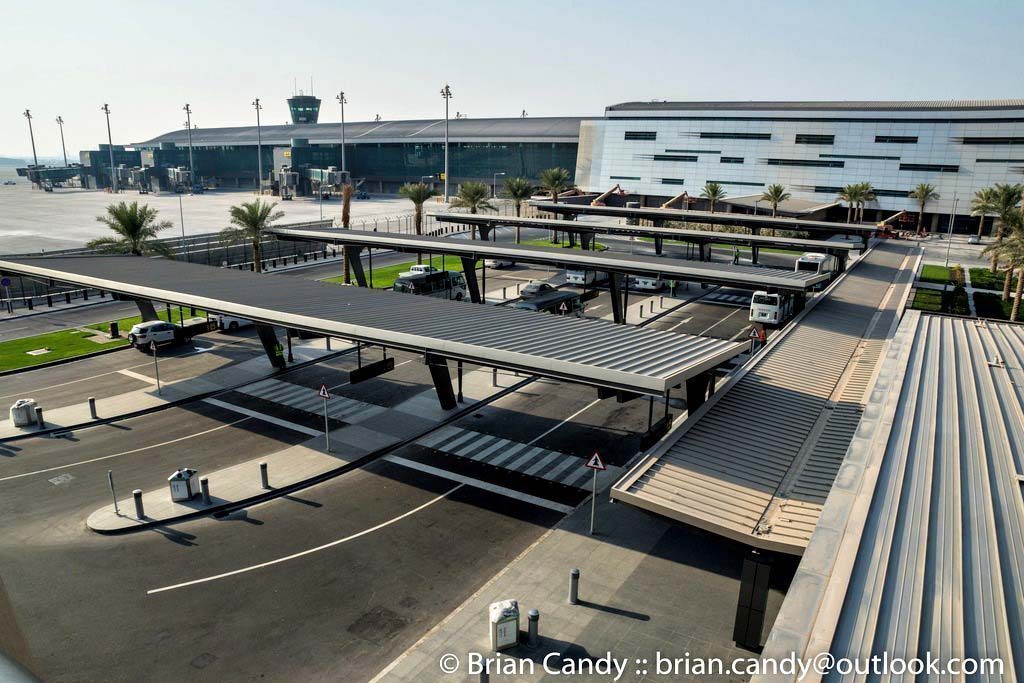
As the overtaxed Doha International Airport nears “the end of its lifespan,” officials have been gearing up for a soft launch of the new Hamad International Airport in April, a senior executive has told Doha News.
In an interview on the sidelines of this week’s Airport Exchange conference and trade show, DIA executive vice-president Patrick Muller said transporting the equipment used to service airplanes and facilitate passenger travel from the existing airport to the new one would be a complex logistical operation.
But he added that contracts are in place to accommodate a spring 2014 opening:
“As the operator of the airport, we’re geared up for a soft opening in April … We suggested a soft opening (among other options), followed by a full commercial transfer to the new airport.”
History of delays
The new, high-tech $15.5-billion HIA was originally scheduled to be completed in 2009. That was pushed to Dec. 12, 2012, and the most recent promise of a launch by the end of 2013 has also been scuttled.
The reasons for the delays have included incomplete lounges and failed safety inspections, which is what canceled the airport’s opening just hours before the first plane was set to land at HIA earlier this year, on April 1, 2013.
That aborted takeoff was blamed on contractor Bechtel.
However, a senior official there said in September that work on the airport is “virtually complete,” and could be “ready any time” its client – Qatar Airways – wants to launch.

Similarly, Muller said that his team is prepared to make a move at any time. The airport operator, for example, continues to run advanced trials. This week, officials simulated a failure of the passenger information display systems to see how staff would react and recover.
Additionally, employees are already inside the new airport, supervising cleaning contracts and preparing information desks.
“We have our processes in place, we have our staff in place … we have our equipment purchased,” Muller said. “We’re ready to rumble.”
But when Muller and his team actually get to process their first passenger is another matter.
The executive emphasized that he had no insights into how inspections by Civil Defense officials have been progressing.
He also said he could not comment on when the airport would actually open and instead referenced the latest timeline, announced by Transport Minister Jassim Al Sulaiti late last month, in which the official said the airport would open “early next year.”
Qatar Airways also declined to comment to Doha News about any opening date projections.
In April, 10 budget airlines were expected to be the first to operate out of HIA, in large part because business class lounges had not been completed.
But this time around, it still remains unclear which airlines would move first, how many would operate at HIA from the start, or even whether the new airport would open with a gradual transition as opposed to handling all of Doha’s commercial aviation traffic on day one. Those decisions would be made at a political level, Muller said.
“We’re geared up for any scenario.”
Unanswered questions
When the December 2012 deadline was missed, officials accused contractor Lindner Depa Interiors of failing to complete the $245 million construction of 19 airport lounges.
Muller said on Wednesday that he’s been briefed on the status of the lounges by construction crews, but refused to comment on their progress.
“I’m quite optimistic, but I cannot disclose anything more than that.”

Similarly, travelers will have to wait a bit longer to learn what stores will be located inside of HIA. When Doha News toured the new airport last month, virtually every retail outlet still lacked signage and was covered in generic construction hoarding.
Muller referred all questions about the retail operations to Qatar Duty Free.
“We’re not providing any details.”
But when questioned by Doha News during the airport tour, Qatar Duty Free simply said it preferred the identities of the brands to be “a surprise.”
The executive did say that there would be two transit hotels attached to the airport, with 100 rooms each – one in the north “node” and the other in the south end. Both will have attached swimming pools, spas and squash courts.
But who will operate the hotels also remains unclear. According to Muller, names have not been disclosed and he was not aware if a contract has been signed.
Fate of DIA
Regardless of how quickly commercial airlines cease to operate out of Doha International Airport, military aircraft and helicopters will continue to use the facility for the foreseeable future.
“We’ll support (those) operations as long as required,” Muller said.
He added that he does not know what will happen to the passenger terminals once they are no longer in use. The terminals are owned by Qatar’s Civil Aviation Authority.
Muller said his current plans are to remove everything that belongs to Qatar Airways and hand the keys over to the aviation authorities. However, he added that he may receive further instructions and direction in the future.
Christmas rush
DIA has operated beyond its capacity for years, at busy times forcing planes to routinely circle the airport before landing.
Muller said the airport’s declared capacity is 29 aircraft movements (takeoffs and landings) an hour. But DIA typically operates at between 35 and 38 aircraft movements an hour, including non-commercial operations.
“This airport has reached the end of its lifespan. We’re just trying to manage the operations as good as we can,” Muller said.

He said the holidays don’t actually result in more passengers using the airport. There are more travelers starting and completing their journey in Doha, but there are also fewer connecting passengers.
“Behind the security screening process, the crowd is the same,” he said.
Muller said several measures are being put in place to alleviate the expected crunch of passengers passing through the airport’s front doors around Christmas.
As in past holidays, passengers flying out on Qatar Airlines in Terminal A may be directed to clear immigration in Terminal B to better balance lineups in the two departure areas.
And in the aftermath of the traffic gridlock around the airport at the start of Eid, the Ministry of Interior recently stations 20 traffic police officers at the airport.
The airport’s parking capacity will also increase by between 250 and 300 stalls when a new multi-level car park fully opens in roughly a week’s time.
While it may seem odd at first glance to open new parking facility months before the airport is shuttered, Muller said it is a temporary structure that can be dismantled and moved elsewhere when it is not longer needed.
“This was a quick solution,” he said.







